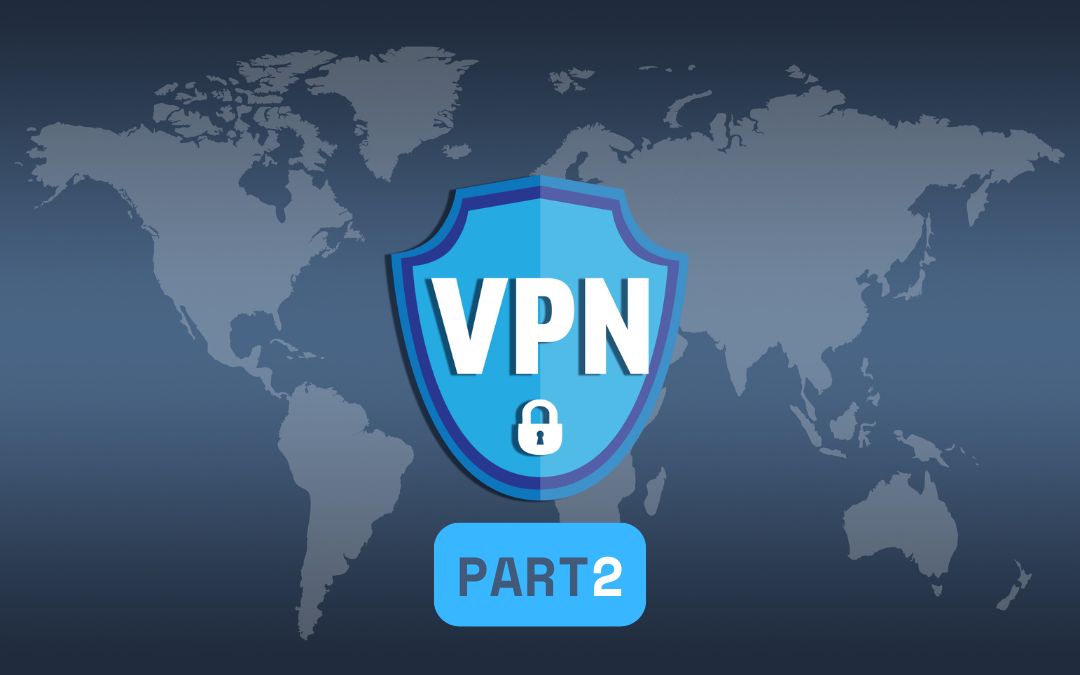
Many businesses trust VPNs to keep their data safe. But that trust often creates blind spots — and attackers know it.
The truth is, VPN limitations are putting companies at risk in ways most teams don’t realize. From stolen credentials to gaps in cloud protection, relying on VPNs alone leaves too many doors open.
In this guide, we’ll unpack the biggest VPN limitations businesses face today — and show you what it takes to build a security strategy that’s ready for 2025 and beyond.
(Missed part one? Catch up with our guide to VPN basics — what they are, how they work, and why they matter.)
Where VPNs fall short for business security
VPNs help encrypt connections — but they leave critical security gaps untouched. If your business relies solely on a VPN, here’s where you’re still vulnerable:
- Phishing attacks still get through: A VPN secures the network path, but it can’t stop employees from clicking malicious links or opening fake emails. Attackers can still steal credentials, install malware, or breach systems undetected.
- Compromised credentials = full access: If an attacker gets hold of a user’s VPN login, they can move through your systems just like a trusted employee — no alarms, no barriers.
- Slow detection of threats inside the network: VPNs encrypt data, but they don’t monitor behavior once someone is inside. If an insider or hacker moves laterally, your VPN won’t raise any red flags.
- No protection for devices themselves: Laptops, phones, and tablets connecting to the VPN could already be infected with malware. A VPN doesn’t scan or protect the device — it just transports the risk inside.
- Gaps around cloud app usage: Most cloud services (like Microsoft 365 or Google Workspace) use their own encryption and security models. VPNs don’t meaningfully protect these — and they can even slow down access without adding real value.
Today’s attackers target people, devices, and behaviors — not just networks. And a VPN, by design, was never built to address those modern risks.
Why traditional VPNs struggle with modern business needs
When VPNs first became popular, business networks looked very different. Most employees worked in a single office. Company systems lived on local servers. Remote work was rare — and cloud apps didn’t even exist.
Today, everything has changed.
- Remote and hybrid work are now standard: Teams work from home, on the road, and across different time zones. VPNs weren’t built for this scale — and often can’t handle the demand without slowing down performance.
- Cloud platforms dominate daily operations: Modern businesses rely on tools like Microsoft 365, Salesforce, and Google Workspace. VPNs add complexity without providing meaningful protection for these cloud-native services.
- Security and compliance requirements are stricter: Regulations like GDPR and industry-specific standards demand detailed access controls and visibility. Traditional VPNs offer limited options to monitor, restrict, or audit user behavior once connected.
- Cyber threats have evolved: Attackers no longer just target networks — they exploit endpoints, user accounts, and cloud apps. VPNs were designed to protect network edges, not the dynamic, interconnected systems businesses use today.
In short, businesses have outgrown what VPNs were designed to do. To keep pace, a modern security strategy needs to move beyond simply securing a tunnel — it must focus on securing users, devices, and data wherever they are.
What your business really needs alongside (or instead of) a VPN
Relying on a VPN alone no longer cuts it. To protect your business today, you need a layered security approach that adapts to where your people, devices, and data actually are.
Here’s what modern businesses should be considering:
- Zero Trust Network Access (ZTNA): Instead of trusting anyone once they’re connected, Zero Trust verifies every request as if it comes from an open network — every user, every device, every time. It limits access to only what’s needed, reducing the damage a breach can cause.
- Cloud-native security solutions: Cloud Access Security Brokers (CASBs) and secure web gateways offer protection specifically designed for cloud platforms, keeping sensitive data safe without slowing down productivity.
- Endpoint protection and device management: It’s not enough to secure the network — you need to secure the devices too. Endpoint Detection and Response (EDR) tools can spot and stop threats directly on laptops, phones, and tablets, even if a VPN is compromised.
A smart security strategy uses a VPN as one tool among many — not the whole toolbox. The goal isn’t just securing connections anymore — it’s securing people, devices, and data wherever they operate.
Practical next steps for mid-sized businesses
Building a stronger security foundation doesn’t have to be overwhelming. Here are three steps you can take right now to move beyond VPN-only protection:
#1 Audit your current setup:
Review how your VPN is used today. Who has access? What systems are protected — and what’s left exposed? Knowing where you stand is the first step to closing security gaps.
#2 Layer your defenses:
Start thinking beyond just network protection. Implement tools like endpoint security, multi-factor authentication, and Zero Trust policies to cover users, devices, and cloud apps.
#3 Get expert guidance:
Security needs grow as your business grows. Partnering with a trusted IT provider can help you design a scalable strategy that fits your operations — without adding unnecessary complexity.
The earlier you start building layered defenses, the easier it is to stay ahead of growing risks — and to keep your business moving safely forward.
Strengthening your security beyond the VPN
A VPN is still a valuable tool — but it’s no longer enough to protect a modern business on its own.
Today’s security threats target people, devices, cloud apps, and behaviors — not just network traffic.
By layering your defenses and focusing on securing every connection, every user, and every device, you can stay ahead of evolving risks without slowing down your team’s productivity.
Ready to build a smarter, stronger security strategy?
Whether you need to modernize your VPN setup, layer in Zero Trust defenses, or better protect your people, devices, and cloud apps, our cybersecurity experts can help.
Book a free consultation today — and start closing the gaps before threats find them.
Sign up below to join the Operum newsletter



